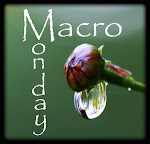
The dandelion is a perennial, herbaceous plant with long, lance-shaped leaves. They're so deeply toothed, they gave the plant its name in Old French: Dent-de-lion means lion's tooth in Old French.The leaves are 3 to 12" long, and 1/2 to 2-1/2" wide, always growing in a basal rosette. The rosette’s immature, tightly wrapped leaf bases just above the top of the root form a tight "crown."Dandelion leaves are at their best when they've just emerged.The dandelion’s well-known yellow, composite flowers are 1 to 2" wide.
They grow individually on hollow flower stalks 2 to 18" tall. There are no poisonous look-alikes. Other very similar Taraxacum species, as well as chicory and wild lettuce only resemble dandelions in the early spring. All these edibles also exude a white milky sap when injured, but chicory and wild lettuce leaves have some hair, at least on the underside of the midrib, while Taraxacum leaves are bald. Unlike the other genera, Taraxacum stays in a basal rosette. It never grows a tall, central, stalk bearing flowers and leaves.

Dandelions are especially well-adapted to a modern world of "disturbed habitats," such as lawns and sunny, open places. They were even introduced into the Midwest from Europe to provide food for the imported honeybees in early spring. They now grow virtually worldwide. Dandelions spread further, are more difficult to exterminate, and grow more under adverse circumstances than most competitors.
Most gardeners detest them, but the more you try to weed them up, the faster they grow.
The taproot is deep, twisted, and brittle.
Unless you remove it completely, it will regenerate. If you break off more pieces than you unearth, the dandelion wins.
"What's a dandelion digger for?" a dandelion asked.
"It’s a human invention to help us reproduce," another dandelion replied.
Collect dandelion leaves in early spring, when they're the tastiest, before the flowers appear. Harvest again in late fall.
After a frost, their protective bitterness disappears. Dandelions growing in rich, moist soil, with the broadest leaves and largest roots, are the best.
Select the youngest individuals, and avoid all plants with flowers. Some people eat the greens from spring to fall, when they're very bitter.
Others boil out the summer bitterness (and water-soluble vitamins) out in two changes of water. It’s all a matter of preference.
Dandelion greens are wonderful in salads, sautéed or steamed. They taste like chicory and endive, with an intense heartiness overlying a bitter tinge.
People today shun bitter flavors—they’re so conditioned by overly sweet or salty processed food. But in earlier times, we distinguished between good and bad bitterness. Mixed with other flavors, as in a salad, dandelions improve the flavor.
You can also eat dandelion flowers, or use them to make wine. Collect them in a sunny meadow, just before mid-spring, when the most flowers bloom. Some continue to flower right into the fall. Use only the flower’s yellow parts. The green sepals at the flower’s base are bitter.
The flowers add color, texture, and an unusual bittersweet flavor to salads. You can also sauté them, dip them in batter and fry them into fritters, or steam them with other vegetables. They have a meaty texture that contrasts with other lighter vegetables in a stir-fry dish or a casserole.
The leaves are more nutritious than anything you can buy. They're higher in beta-carotene than carrots. The iron and calcium content is phenomenal, greater than spinach. You also get vitamins B-1, B-2, B-5, B-6, B-12, C, E, P, and D, biotin, inositol, potassium, phosphorus, magnesium, and zinc by using a tasty, free vegetable that grows on virtually every lawn. The root contains the sugar inulin, plus many medicinal substances.
Today I picked a mountain of dandelion leaves. Tomorrow being Mothers Day- both my Mom and my Mother in Law love them. So began my labor of love.
I cleaned them very carefully (it is really a pain in the neck job!) then washed them at least 3-4 times.
They seem to hide dirt somehow!
Then I boiled them.
Now my Mother-in-Law waits for me to finish boiling these little leaves so she can have a cup of the liquid that remains. It is golden in color and with the addition of a stream of olive oil and a sprinkle of salt it is delicious.
Of course one has to acquire a taste for this bitter nectar of the Gods!
My Grandmother used to drink it all the time- it is so full of vitamins and nutrients you even feel healthier after you drink a cup!
Ok , well once I have boiled all my vegetable I made two batches...
one plain with salt and a drizzle of olive oil
and the other with garlic,olive oil,and cannellini beans.
This version happens to be my favorite.
With some really good crusty Italian bread this is food of the Gods!
Now they are ready for tomorrow...my extra little treat for the Moms!



























5 comments:
The very best part of dandelions is that children pick them for you!
Oh Mary that is so true...nothing is nicer than a bouquet of little yellow dandelions!
In Pa. we have dandelion festivals!! We love our little dandelions here!
Bunny where are they held- I dont think there are any in Pa near me!
Susan, I just love your blog! It's so jammed packed with interesting entries...
A friend and I were just talking about dandelions... about eating them... but neither of us have ventured that far.
Man... you could live on them here! We've got a bumper crop growing out in the pasture... in my strawberry patch... in the lawn.
How interesting to sip on dandelion water....
Post a Comment